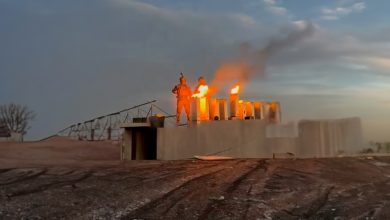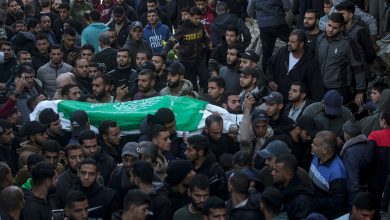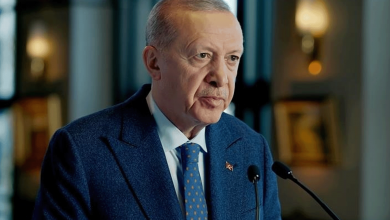Gaza – In the wake of two years of intense conflict, the United Nations Relief and Works Agency for Palestine Refugees in the Near East (UNRWA) is urgently working to restore educational opportunities for children in the Gaza Strip. With a fragile ceasefire holding, the agency is prioritizing the re-establishment of learning environments and has registered approximately 300,000 children for online learning programs.
John White, Deputy Director of UNRWA Affairs in Gaza, emphasized the critical need to provide children with stability and structure. “Palestinian children in the Gaza Strip need routine, education, and structure, and we must strive to achieve that,” he stated. He highlighted the immense trauma and suffering endured by children during the conflict, underscoring the importance of education as a pathway to recovery and normalcy.
UNRWA is currently expanding its efforts to provide educational services, with a significant focus on online learning platforms. This initiative aims to reach a large number of children who have been displaced or whose schools have been damaged or destroyed during the conflict. The online programs offer a flexible and accessible way for children to continue their education, regardless of their location or circumstances.
Beyond online learning, UNRWA is also working to establish physical learning spaces within Gaza. “UNRWA remains the largest provider of emergency education in the Gaza Strip and is trying to find spaces in some schools in Gaza to provide educational services,” White explained. The agency is actively seeking to utilize existing school buildings, even those partially damaged, to create safe and conducive learning environments for children.
Describing the current situation in Gaza, White noted the challenges in scaling up educational programs. “Since the recent ceasefire, our teams have been trying to find spaces in some schools to provide educational services to about 10,000 children daily, compared to about 60,000 children during the previous ceasefire between Hamas and Israel on January 15th.” This highlights the significant reduction in capacity due to the widespread destruction and displacement caused by the conflict. The agency is actively working to increase its reach and provide education to as many children as possible.
The recent ceasefire, which came into effect on October 10th, was brokered following a plan outlined by the U.S. President, whose administration had previously supported the military operations in Gaza. This ceasefire agreement included provisions for the exchange of prisoners between Hamas and Israel, representing a crucial step towards de-escalation and stability.
However, the conflict has left an indelible mark on the educational landscape of Gaza. According to the Palestinian Ministry of Education, approximately 20,000 students have been killed and over 30,000 injured since the start of the conflict on October 7, 2023. These devastating figures underscore the immense human cost of the conflict and the urgent need to prioritize the well-being and education of children.
The two-year conflict has resulted in the deaths of 68,280 Palestinians and injuries to 170,375, the majority of whom are children and women. The widespread destruction has impacted approximately 90% of civilian infrastructure, including schools, hospitals, and homes. This level of destruction has created significant challenges for the provision of essential services, including education.
For more information about Palestine, check our dedicated section.
UNRWA’s efforts to provide online learning and establish physical learning spaces represent a crucial step towards restoring hope and normalcy for children in Gaza. However, the agency faces significant challenges in terms of funding, resources, and security. The international community must provide sustained support to UNRWA to enable it to continue its vital work in providing education and other essential services to Palestinian refugees.
The long-term impact of the conflict on the mental and emotional well-being of children in Gaza is also a major concern. Many children have experienced trauma, loss, and displacement, which can have lasting effects on their development. UNRWA is working to provide psychosocial support to children and families to help them cope with the trauma they have experienced.
The provision of education is not only essential for the individual development of children but also for the future of Gaza. By investing in education, the international community can help to create a more stable and prosperous future for the region. Education can empower young people to become active and engaged citizens who can contribute to the rebuilding of their communities.
Furthermore, the international community needs to address the root causes of the conflict and work towards a lasting and just peace. Without a resolution to the underlying political issues, the cycle of violence and destruction will continue, and children in Gaza will continue to suffer. Education plays a crucial role in promoting peace and understanding. By teaching children about tolerance, respect, and empathy, we can help to break down barriers and build bridges between communities.
In conclusion, UNRWA’s efforts to provide online learning and establish physical learning spaces for children in Gaza are commendable and essential. However, the agency needs sustained support from the international community to overcome the challenges it faces. The provision of education is not only a humanitarian imperative but also a critical investment in the future of Gaza and the broader region. Only through education and a commitment to peace can we create a better future for the children of Gaza.
DZWatch will continue to monitor the situation in Gaza and provide updates on UNRWA’s efforts to support Palestinian refugees. We urge our readers to support organizations working to provide humanitarian assistance to the people of Gaza.



